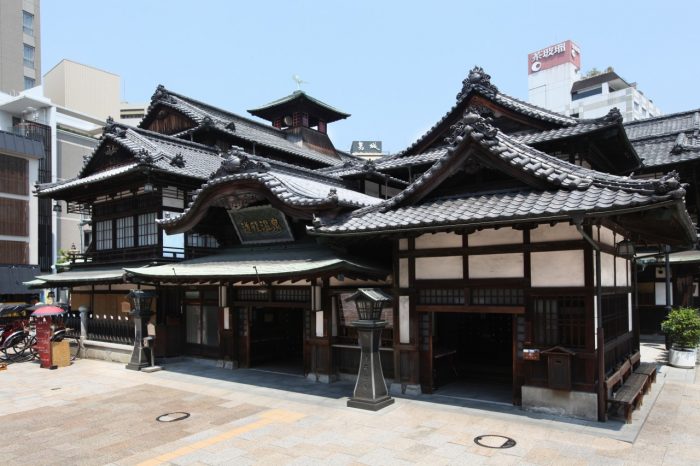What do you picture when you think of Japan? The bustling neon city of Tokyo? Or the historic shrines, picturesque views, and quaint towns? If you’re looking to go beyond the city to meet the charming, slower-paced side of this interesting nation, Shikoku may be for you.
Shikoku is the smallest of Japan’s four main islands. While small in size, this destination offers big rewards to the well-informed traveler. From white-clad pilgrims walking the circuit of the Eighty-eight Shines, to installations of modern art, Shikoku has something for everyone!
Another unique feature of Shikoku is how you will arrive there. Most often, this is done by means of the Great Seto Ohashi Bridge, a double-decker bridge that connects the islands and accommodates both automobile and rail traffic.
From the Marine Liner train, you’ll see views of the islands, sea, seagoing vessels unlike any other. We’ve compiled the following guide to introduce you to this interesting place and give you the confidence to plan your next vacation.
Matsuyama city
Matsuyama, in the Ehime prefecture, is Shikoku’s largest city, yet it still reflects the spirit of times past. While there, you can relax in the Dogo Onsen Honkan, a large and intricate bath house that inspired some elements of the film Spirited Away.

Also worth a visit is the Ishiteji Temple, complete with a unique, large limestone cave 200 meters deep featuring religious paintings. One of Japan’s twelve authentic castles, the Tokushima city castle, is located nearby. It offers a complex, maze-like climb that is rewarded by a stunning overlook of the city.
How to get to Matsuyama by train
From Tokyo, Kyoto, Osaka or any of Japan’s major cities, use your Japan Rail Pass to take the Sanyo Shinkansen bullet train to Okayama. The Sanyo Main Line, Uno, Tusyama and Kibi lines also pass by Okayama and are included in the JR Pass.
Then, take the Shiokaze Limited Express train from Okayama Station. You will pass a number of stations, including Hayashima, Chayamachi, Kojima, and Sakaide Stations before arriving at Matsuyama Station.
Takamatsu city
A primary attraction in Takamatsu is the Ritsurin-Koen landscape garden, originally created as a private garden for a feudal era ruler. Thirteen hills complement the miniature landscapes, and around 3,000 koi, a brilliantly colored fish, inhabit the park’s six ponds. Less trafficked than many other Japanese gardens, the Ritsurin-Koen is an ideal location for solitude and a traditional cup of tea at the tea house.

If you’re looking forward to a bit of shopping, you’ll love Takamatsu’s shopping arcade, one of the longest in Japan. The arcade features both big-name department stores and small local shops.
How to get to Takamatsu by train
From any of Japan’s major cities, use your Japan Rail Pass to take the Sanyo Shinkansen bullet train to the JR Okayama Station.
From Okayama Station, you will take the Marine Liner rapid train to Shikoku via the Great Seto Ohashi Bridge. You will pass a number of stations before reaching Matsuyama Station.
Other Shikoku highlights
Tokushima, in the east of the island, is famous for the Awa Dance Festival in August. Traditional instruments are played, and the streets of the city become a dancing parade. Visit the Awa Odori Kaikan museum to view live dance performances any time of year.
The city of Naruto, meaning “whirlpool,” is famous for its daily whirlpools that form with the changing of the tides. The whirlpools occur six hours apart and can be observed each morning and afternoon. You may also enjoy the Otsuka Museum of Art and the German House, which commemorates a World War II era POW camp. Naruto is an interesting side trip, as it is located about 40 minutes from Tokushima by train.
Shikoku is also well-known for the the 1200-km, 88-Temple Pilgrimage route, associated with Shingon Buddhism and the monk Kūkai. Each year many pilgrims, known as henro, go through this journey forascetic, pious, and touristic purposes.
Finally, you can visit small, nearby islands, such as Naoshima and Teshima, by taking the ferry connection from Takamatsu or Uno. Naoshima, for instance, is an art lover’s paradise. It is home to numerous art museums and large-scale outdoor art installations. Teshima is also a highlight of its own, featuring the which holds the Teshima Art Museum, a unique installation made of a freestanding concrete shell. Please see our Naoshima travel guide for more information.
Where will your travels take you? Start planning your next Japan adventure today. Don’t forget to order your JR Pass of easy and affordable travel by rail!
